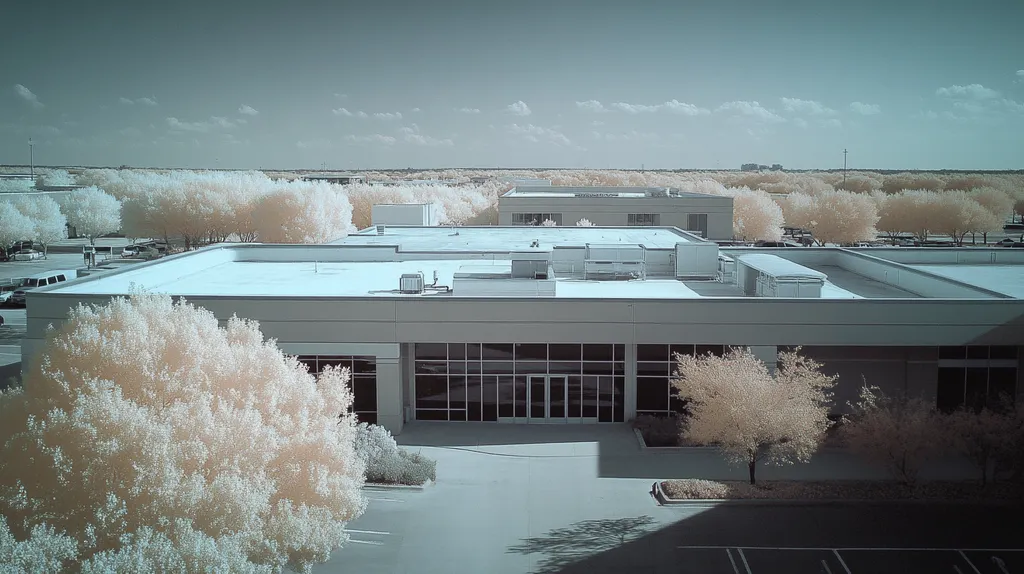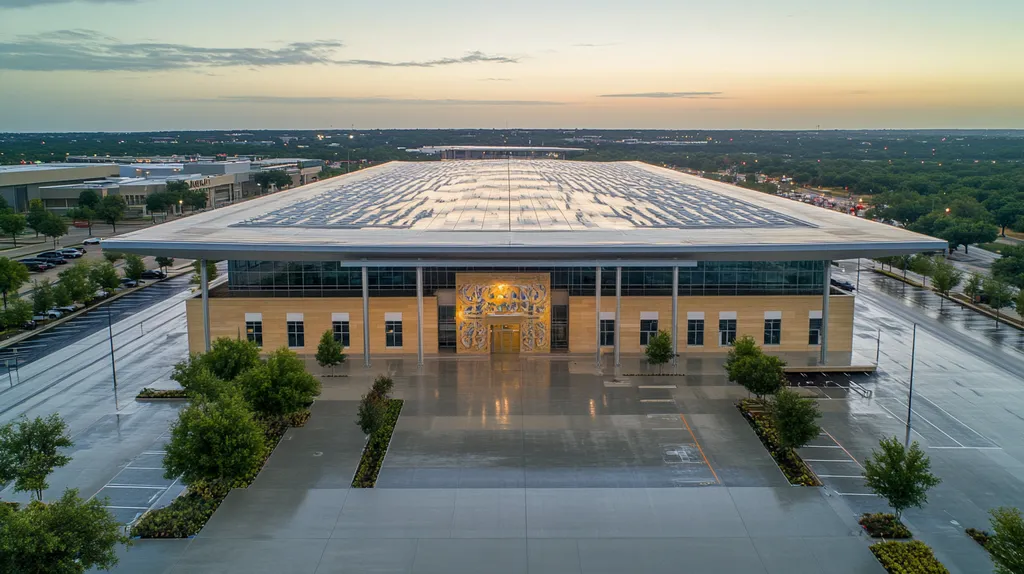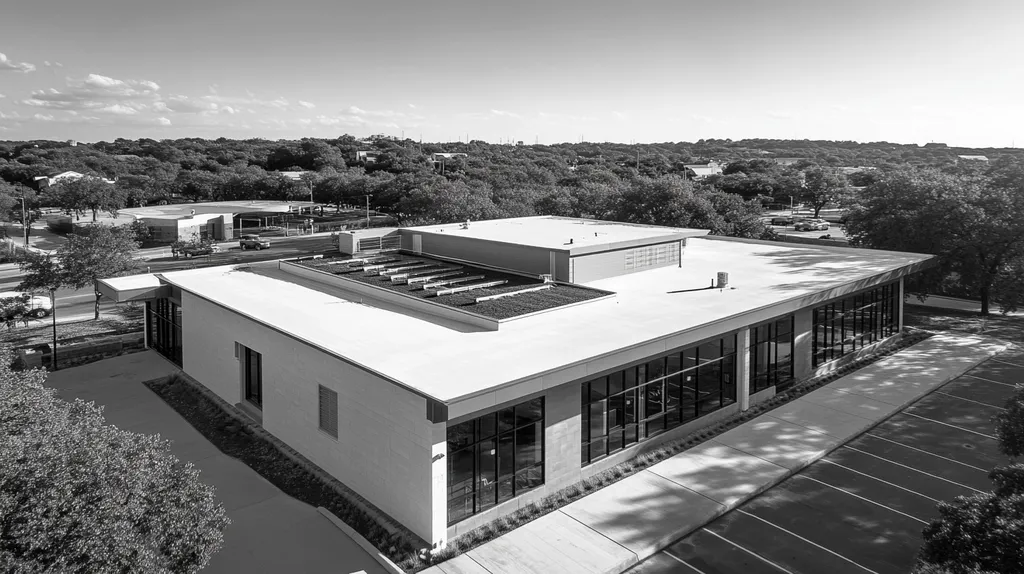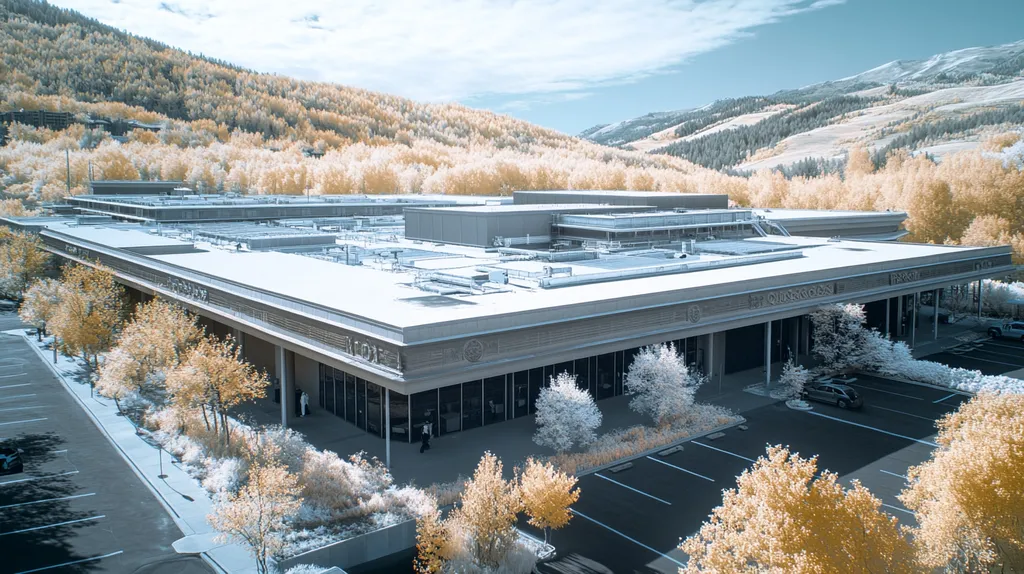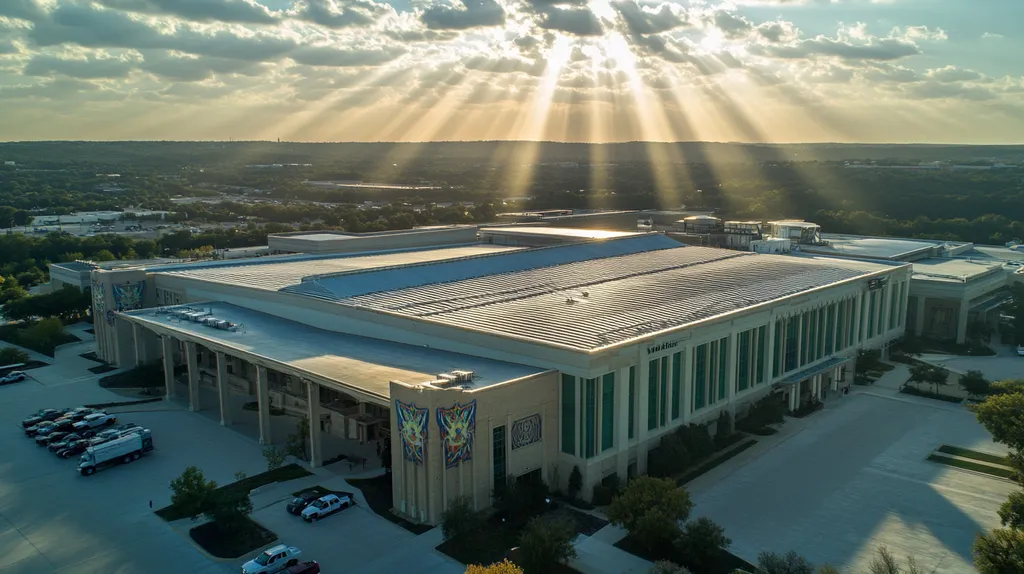In today’s volatile economy, commercial property owners face a critical challenge: protecting their roofing assets while maximizing returns. With roof replacement costs soaring 15-25% annually, many are turning to protective coatings as a cost-effective alternative.
Yet calculating the true ROI of roof coating investments remains complex, involving multiple variables from energy savings to maintenance cost reductions. Studies show that properly planned coating projects can deliver 25-40% returns, while poorly executed ones often result in premature failure.
This comprehensive guide breaks down the essential components of roof coating ROI, helping facility managers make data-driven decisions that optimize their building’s long-term value.
SECTION 1: FUNDAMENTAL CONCEPTS
When it comes to protecting commercial buildings, few decisions have as much financial impact as roof coating investments. While the upfront costs may seem substantial, properly applied coatings can extend roof life by 10-15 years and slash energy expenses by up to 35%. Yet many property owners struggle to accurately calculate the true return on their coating investments.
This section breaks down the essential concepts needed to evaluate roof coating ROI, helping facility managers make data-driven decisions that maximize their building’s long-term value.
Defining ROI in Commercial Roof Coating Investments
ROI for roof coatings goes far beyond simple payback calculations. The comprehensive formula accounts for both immediate gains and long-term value creation: ROI = (Gain from Investment – Cost of Investment) / Cost of Investment × 100.
Key gains include immediate property value increases, annual maintenance savings, improved tenant retention, enhanced energy efficiency, and reduced insurance premiums. (source: Moorhouse Coating)
Building owners must also factor in regional climate conditions, utility rates, and local building codes that can significantly impact coating performance and financial returns.
Understanding these components allows for more accurate ROI projections and helps justify coating investments to stakeholders and financial decision-makers.
Key Financial Drivers Affecting Roof Coating ROI
The initial coating material and installation costs represent only a fraction of the total financial equation. Energy savings often become the largest contributor to positive returns, especially in warm climates where cooling demands are high.
Maintenance cost reductions provide another substantial return driver. Quality coatings can eliminate many common repair needs while extending the intervals between major maintenance activities.
Insurance savings and potential tax incentives further enhance ROI. Many insurers offer premium reductions for buildings with protective coatings, while various jurisdictions provide tax benefits for energy-efficient improvements.
Property value appreciation adds another layer of returns, as well-maintained roofs with protective coatings typically command higher resale values and attract quality tenants.
Energy Savings and Lifecycle Cost Analysis
A proper lifecycle cost analysis examines expenses and benefits throughout the coating’s entire service life. This includes initial application costs, projected maintenance requirements, and anticipated energy savings over 10-15 years.
Cool roof coatings deliver particularly impressive returns in hot climates, where they can reduce peak cooling demand by 15-25%. These savings compound annually as energy costs continue rising.
Regular maintenance inspections and occasional recoating can extend performance life well beyond initial projections. This extended service life dramatically improves overall ROI by spreading costs across more years of benefits.
The most successful coating projects combine careful product selection with proper installation and maintenance protocols to maximize long-term financial returns.
SECTION 2: SYSTEM COMPONENTS
Every dollar spent on commercial roof coating must deliver maximum value. The right combination of materials, preparation, and application can extend roof life by 10-20 years while slashing energy costs by 20-40%. However, choosing the wrong components or cutting corners on installation can lead to premature failure and costly repairs.
Let’s examine the critical elements that determine whether your roof coating investment will generate outstanding returns or disappointing results.
Types of Roof Coating Materials and Properties
Modern roof coatings fall into three primary categories: acrylic, silicone, and polyurethane. Each offers distinct advantages for specific situations and climate conditions.
Acrylic coatings provide excellent UV protection and flexibility at a lower cost point. They perform particularly well in moderate climates but may require more frequent reapplication in extreme conditions.
Silicone coatings excel at moisture resistance and maintain their properties longer than other options. While more expensive initially, their superior durability often delivers better long-term value.
Polyurethane coatings offer the best resistance to foot traffic and physical damage. They’re ideal for roofs with regular maintenance access or mechanical equipment service needs.
Professional roof coating typically costs 50-70% less than complete roof replacement while delivering energy savings that can justify the investment within 3-5 years. (source: Talbot Companies)
Substrate Preparation and Compatibility Considerations
The success of any coating system depends heavily on proper substrate preparation. Even minor oversights in this phase can lead to coating failure and negated returns.
Each roofing material requires specific preparation protocols. Metal roofs need thorough rust removal and primer application, while single-ply membranes often require specialized cleaning and adhesion promoters.
Surface contamination poses a major threat to coating adhesion. Oil, dirt, and biological growth must be completely removed to ensure proper bonding.
Environmental conditions during preparation also impact success. Temperature, humidity, and dew point must fall within acceptable ranges to achieve optimal results.
Impact of Coating Thickness and Application Techniques on ROI
Coating thickness directly influences both protection level and service life. Under-application leads to premature failure, while over-application wastes material without proportional benefit gains.
Different coating types require specific application methods. Spray application generally provides the most uniform coverage but demands greater skill and equipment investment.
Multiple thin coats typically perform better than a single thick layer. This approach reduces bubbling and improves cure uniformity, leading to better long-term performance.
Quality control during application proves crucial. Regular mil thickness checks and environmental monitoring help ensure optimal coating performance and maximize return on investment.
SECTION 3: IMPLEMENTATION METHODS
When implementing commercial roof coatings, precise execution can mean the difference between a 20-year protection system and catastrophic failure within months. Industry data shows that over 60% of coating failures stem from improper implementation rather than material defects. Successful coating projects demand meticulous surface preparation, exacting application procedures, and strategic timing to maximize investment returns.
Surface Assessment and Pre-Installation Testing
Every successful coating project starts with comprehensive surface evaluation. This includes core sampling to verify existing roof composition and adhesion testing to ensure coating compatibility.
Infrared moisture scanning helps identify wet insulation and compromised areas that require repair before coating. Ignoring hidden moisture can lead to massive blistering and coating separation within months of application.
Surface profile measurements determine whether additional preparation steps like power washing or primer application are necessary. Even minor surface contamination can reduce coating adhesion by up to 50%.
ROI calculations must factor in thorough surface preparation costs, as proper assessment dramatically impacts long-term coating performance. (source: SunbaseData.com)
Application Procedures and Quality Control Measures
Successful coating application requires strict adherence to manufacturer-specified conditions and procedures. Temperature, humidity, and dew point must all fall within acceptable ranges to ensure proper curing.
Regular wet film thickness measurements during application help maintain consistent coverage. Variations in coating thickness can create weak points that lead to premature failure.
Quality control should include documentation of ambient conditions, material batch numbers, and application techniques. This data proves invaluable for warranty claims and maintenance planning.
Daily pull tests verify coating adhesion strength throughout the project. Early detection of adhesion issues allows for immediate corrective action, preventing costly rework.
Scheduling and Weather Considerations for Optimal Coating Performance
Project timing significantly impacts coating success rates. Spring and fall typically offer ideal application conditions with moderate temperatures and lower humidity levels.
Weather monitoring should begin several days before scheduled application. Even brief exposure to rain or dew during curing can compromise coating integrity.
Work scheduling must account for cure times between multiple coat applications. Rushing between coats often leads to inter-coat adhesion failure and reduced system longevity.
Strategic scheduling should also consider building occupancy patterns and HVAC operation. Coordinating with tenant activities minimizes disruption while ensuring optimal curing conditions.
SECTION 4: MAINTENANCE REQUIREMENTS
The difference between a roof coating that lasts 20 years and one that fails in 5 often comes down to maintenance. While proper installation is crucial, studies show that 70% of premature coating failures stem from inadequate maintenance practices. For commercial properties, every year of extended coating life represents thousands in avoided replacement costs and energy savings.
Understanding and implementing the right maintenance protocols can dramatically impact your coating investment’s long-term performance and financial returns.
Routine Inspection Protocols to Preserve Coating Integrity
Every successful maintenance program starts with systematic inspections. Quarterly visual assessments should examine seams, penetrations, and drainage paths where problems typically begin.
Document all findings with photos and detailed notes, creating a historical record that helps track degradation patterns. This documentation proves invaluable for warranty claims and maintenance planning.
Focus particular attention on high-stress areas like mechanical equipment mounting points, roof edges, and areas where water pools. These zones typically show the first signs of coating breakdown.
Consider using moisture detection tools during inspections to identify hidden problems before they compromise coating adhesion. Early detection of moisture infiltration can prevent extensive damage.
Preventive Maintenance Strategies to Extend Roof Life
Comprehensive ROI calculations must factor in both immediate property value increases and long-term maintenance savings. Regular coating maintenance dramatically reduces repair costs while maintaining energy efficiency benefits. (source: Moorhouse Coating)
Establish clear maintenance schedules that include regular cleaning to remove debris and contaminants. Even small amounts of standing debris can trap moisture and accelerate coating breakdown.
Address minor repairs immediately using compatible materials. Small problems like pinhole leaks or surface cracks can quickly escalate if left untreated.
Maintain detailed service records including repair dates, materials used, and contractor information. This data helps optimize maintenance timing and validates warranty compliance.
Cost-Benefit Analysis of Maintenance Interventions
Compare the costs of proactive maintenance against reactive repairs and premature replacement. Regular maintenance typically costs 1-2% of roof replacement value annually while extending coating life by 25-50%.
Track energy efficiency metrics before and after maintenance activities. Well-maintained coatings retain their reflective properties longer, maintaining energy savings that contribute to ROI.
Factor in the operational costs of coating failure, including potential damage to inventory, equipment, or tenant disruption. These indirect costs often dwarf direct repair expenses.
Review maintenance records annually to identify recurring issues and optimize intervention timing. This data-driven approach helps maximize maintenance ROI while minimizing unnecessary expenses.
SECTION 5: PERFORMANCE METRICS
Tracking performance metrics can mean the difference between a roof coating investment that delivers outstanding returns and one that wastes thousands of dollars. Industry data shows that well-monitored coating projects routinely deliver 25-35% better ROI than those without proper measurement systems in place.
Yet many facility managers struggle to implement effective tracking protocols, missing critical optimization opportunities. Understanding and monitoring the right metrics enables data-driven decisions that maximize coating performance while minimizing costs.
Measuring Energy Efficiency Gains Post-Coating
Cool commercial roofs deliver measurable reductions in air conditioning costs by reflecting more sunlight and absorbing less heat. These reflective coatings typically reduce cooling expenses by 15-30% in the first year alone.
Proper measurement requires establishing clear baseline data before coating application. This includes at least 12 months of utility bills and HVAC runtime logs to account for seasonal variations.
Monthly energy consumption tracking should continue post-coating, with adjustments for weather patterns and occupancy changes. Smart building management systems can automate this data collection while providing real-time performance insights.
Cool roofs can extend roof lifespan by 5-10 years while reducing annual repair needs by 10-15%, delivering $0.10-$0.20 per square foot in maintenance savings. (source: Litespeed Construction)
Tracking Maintenance Cost Reductions Over Time
Systematic maintenance tracking should begin immediately after coating application. Document all inspections, repairs, and associated costs in a centralized system for trend analysis.
Compare current maintenance expenses against historical data, accounting for inflation and local market conditions. Well-performing coatings typically reduce annual maintenance costs by 20-30%.
Track both frequency and severity of required repairs. Declining repair incidents indicate successful coating performance, while increasing needs may signal areas requiring attention.
Monitor coating thickness and reflectivity annually through standard field tests. These measurements help predict future maintenance needs while validating coating performance.
Evaluating Roof Longevity and Deferral of Replacement Costs
Regular roof assessments using standardized rating systems provide objective measures of coating impact on roof life extension. Document surface conditions, adhesion strength, and water resistance at consistent intervals.
Calculate the net present value of deferred replacement costs. Quality coatings typically extend roof life by 10-15 years, generating substantial savings when compared to early replacement.
Monitor warranty compliance through detailed maintenance records. Proper documentation ensures maximum coverage while identifying trends that could impact long-term performance.
Track changes in property value and insurance rates related to roof condition. Well-maintained coated roofs often qualify for premium reductions while enhancing overall building value.
SECTION 6: OPTIMIZATION STRATEGIES
Every dollar invested in commercial roof coating must deliver maximum returns. While basic coating applications can extend roof life and reduce energy costs, strategic optimization can double or triple these benefits. Yet many building owners leave thousands in potential savings on the table by overlooking key opportunities to enhance their coating investments.
Through careful planning and implementation of proven optimization strategies, facility managers can transform standard coating projects into powerful drivers of long-term value creation.
Leveraging Tax Incentives and Utility Rebates for ROI
Federal, state and local governments offer numerous incentives for energy-efficient building improvements. The federal 179D deduction alone can provide up to $1.80 per square foot for qualifying roof coating projects that demonstrate significant energy reductions.
Many utility companies provide direct rebates for cool roof installations, often covering 15-30% of project costs. These programs typically require pre-approval and documentation of energy performance improvements.
State-level programs frequently stack with federal incentives, multiplying available benefits. Some jurisdictions offer accelerated depreciation or property tax reductions for energy-efficient upgrades.
Building owners should consult qualified tax professionals early in the planning process to maximize incentive capture. Proper documentation and timing proves crucial for securing maximum benefits.
Integrating Reflective Coatings for Enhanced Energy Savings
Cool roof coatings provide one of the fastest returns through immediate reductions in cooling costs. Surface temperatures can drop by 50-60°F compared to traditional dark roofs.
Energy savings compound over time as utility rates continue rising. Buildings in warm climates often see cooling cost reductions of 20-35% in the first year alone.
Reflective coatings also protect underlying roofing materials from UV damage and thermal stress. This dual benefit extends roof life while reducing air conditioning load.
Modern cool roof coatings maintain their reflective properties longer than earlier generations. Quality products can retain 80-90% of initial reflectivity after 3 years with proper maintenance.
Data-Driven Decision Making Using Case Studies and ROI Tools
Commercial roof coatings deliver measurable financial advantages through both energy efficiency gains and reduced cooling demand. Case studies consistently demonstrate positive returns when projects leverage appropriate coating technologies.
Historical performance data helps predict likely outcomes for similar buildings and climates. This evidence-based approach allows for more accurate ROI projections and better-informed coating selections.
Advanced modeling tools can simulate energy impacts based on local weather patterns, utility rates, and building characteristics. These analyses identify optimal coating specifications for maximum returns.
Systematic tracking of actual versus projected performance enables continuous optimization of coating strategies. Data-driven insights guide future investment decisions while validating project success. (source: SmartSeal)
The Bottom Line
With commercial roof replacement costs increasing 15-25% annually, property owners can no longer afford to overlook coating ROI optimization.
Strategic coating investments consistently deliver 25-40% returns through reduced energy costs, extended roof life, and decreased maintenance expenses.
However, achieving these returns requires careful attention to material selection, proper installation protocols, and ongoing maintenance programs.
By leveraging available tax incentives, implementing data-driven maintenance strategies, and selecting appropriate coating systems, facility managers can transform their roofs from liabilities into valuable assets that generate measurable financial returns for decades.
The time to act is now – every year of delayed coating implementation represents thousands in lost savings potential.
FREQUENTLY ASKED QUESTIONS
Q. What is ROI for commercial roof coating investments?
A. ROI stands for return on investment, measuring how much value a roof coating provides. It considers factors like increased property value, maintenance savings, and energy efficiency, helping property owners see the financial benefits over time. Understanding ROI helps in making informed decisions about your commercial roof.
Q. What materials are best for industrial roof coatings?
A. Industrial roof coatings come in three main types: acrylic, silicone, and polyurethane. Each offers unique benefits based on your roof’s needs and climate conditions. Choosing the right material can enhance energy efficiency and extend the life of your industrial roof.
Q. How important is surface preparation for commercial roof coatings?
A. Proper surface preparation is crucial for a successful coating application. It ensures that the coating adheres well and performs optimally, preventing premature failure. Neglecting this step can lead to costly repairs and a decreased lifespan of your commercial roof.
Q. What maintenance is required for roof coatings?
A. Regular maintenance includes systematic inspections and cleaning to remove debris or standing water. Immediate attention to minor repairs can help prevent larger issues down the road. Proper maintenance ensures that your roof coating lasts longer and continues to provide energy efficiency savings.
Q. How can I measure the ROI of my roof coating?
A. Measuring ROI involves tracking energy savings, reduced maintenance costs, and any increases in property value post-coating. Using utility bills and maintenance logs can help assess these metrics over time, giving you a clear picture of the financial benefits associated with your investment.
Q. What optimization strategies can increase roof coating ROI?
A. Key optimization strategies include leveraging tax incentives and utility rebates, integrating reflective coatings, and using data analytics for decision-making. These approaches can significantly enhance energy efficiency and increase overall savings, maximizing the ROI of your commercial roof coatings.
Q. How does climate affect commercial roof coating performance?
A. Climate significantly impacts roof coating performance, especially in areas with extreme heat or moisture. Hot climates often benefit from reflective coatings that reduce cooling costs, while moisture-prone regions require coatings with excellent waterproofing properties. Understanding your local climate is essential for selecting the right coating type.

